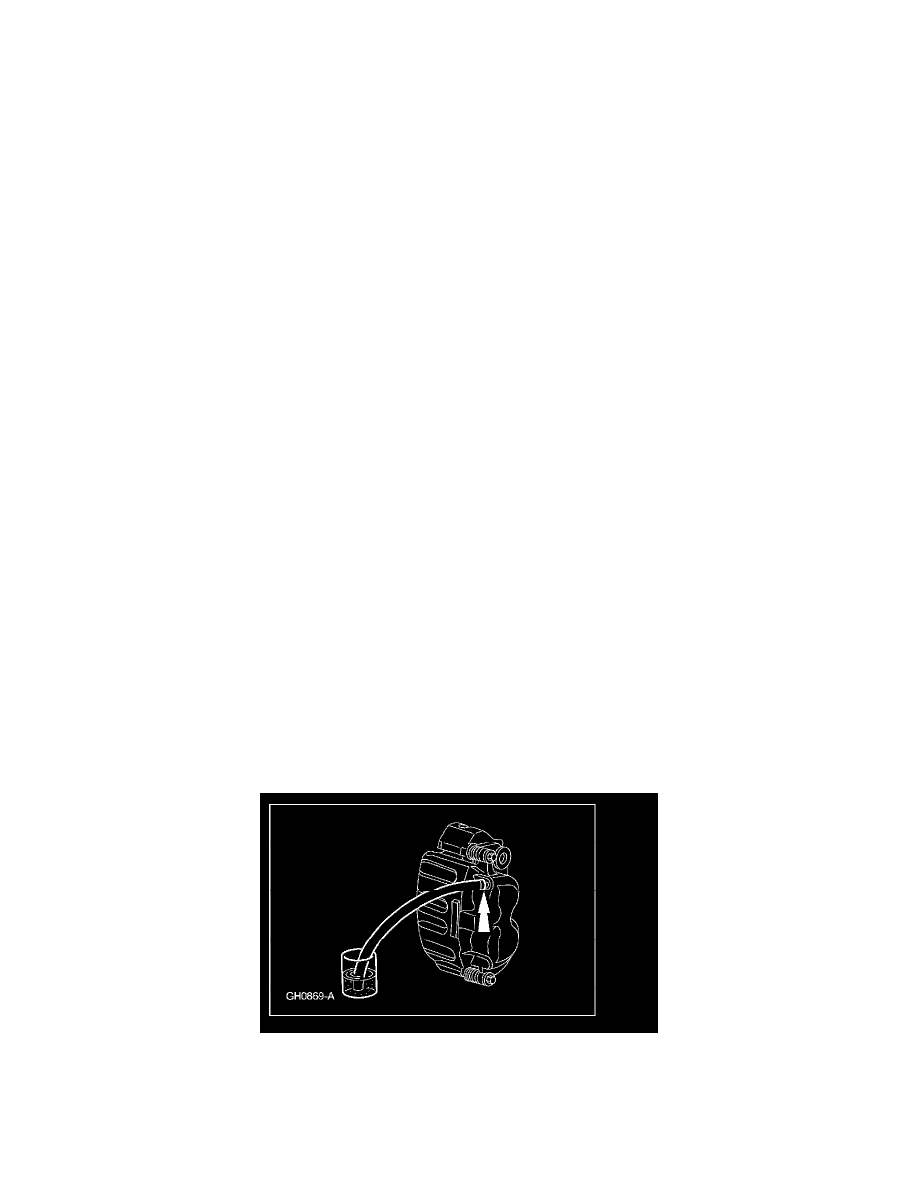Crown Victoria V8-4.6L Flex Fuel (2008)

CAUTION: Brake fluid is harmful to painted and plastic surfaces. If spilled, wipe up immediately before damage to the painted or plastic
surface occurs.
NOTE: When any part of the hydraulic system has been disconnected for repair or installation of new components, air can enter the system and cause
spongy brake pedal action. This requires bleeding of the hydraulic system after it has been correctly connected. The hydraulic system can be bled
manually or with pressure bleeding equipment.
NOTE: When a new brake master cylinder has been installed or the system has been emptied, or partially emptied, it should be primed to prevent air
from entering the system.
1. Place a box-end wrench on the master cylinder bleeder screw and attach a rubber drain hose to the bleeder screw. Submerge the free end of the
rubber hose into the master cylinder reservoir.
2. Fill the master cylinder reservoir with clean, specified brake fluid.
3. Have an assistant pump the brake pedal until clear fluid flows from the rubber hose, without air bubbles.
4. Tighten the master cylinder bleeder screw to 13 Nm (10 ft. lbs.) and remove the rubber hose.
5. Bleed the brake outlet tubes at the brake master cylinder as follows:
1. Have an assistant pump the brake pedal, and then hold firm pressure on the brake pedal.
2. Loosen the rear most brake tube fittings until a stream of brake fluid comes out. While the assistant maintains pressure on the brake pedal,
tighten the brake tube fitting to 17 Nm (13 ft. lbs.).
3. Repeat this operation until clear, bubble-free fluid comes out.
4. Fill the brake master cylinder reservoir with clean, specified brake fluid as necessary. Repeat the bleeding operation at the front brake tube.
Brake Caliper
WARNING: Do not use any fluid other than clean brake fluid meeting manufacturer's specification. Additionally, do not use brake fluid that
has been previously drained. Following these instructions will help prevent system contamination, brake component damage and the risk of
serious personal injury.
WARNING: Carefully read cautionary information on product label. For EMERGENCY MEDICAL INFORMATION seek medical advice.
In the USA or Canada on Ford/Motorcraft products call: 1-800-959-3673. For additional information, consult the product Material Safety
Data Sheet (MSDS) if available. Failure to follow these instructions may result in serious personal injury.
CAUTION: Do not allow the brake master cylinder reservoir to run dry during the bleeding operation. Keep the brake master cylinder
reservoir filled with clean, specified brake fluid. Never reuse the brake fluid that has been drained from the hydraulic system. Damage to the
brake system components may occur.
CAUTION: Brake fluid is harmful to painted and plastic surfaces. If spilled, wipe up immediately before damage to the painted or plastic
surface occurs.
1. NOTE: It is not necessary to do a complete brake system bleed if only the disc brake caliper was disconnected.
Remove the brake caliper bleeder screw cap and place a box-end wrench on the bleeder screw. Attach a rubber drain hose to the bleeder screw and
submerge the free end of the hose in a container partially filled with clean, specified brake fluid.
2. Have an assistant pump the brake pedal and then hold firm pressure on the brake pedal.
3. Loosen the bleeder screw until a stream of brake fluid comes out. While the assistant maintains pressure on the brake pedal, tighten the bleeder
screw.
^
Repeat until clear, bubble-free fluid comes out.
^
Refill the brake master cylinder reservoir as necessary.
